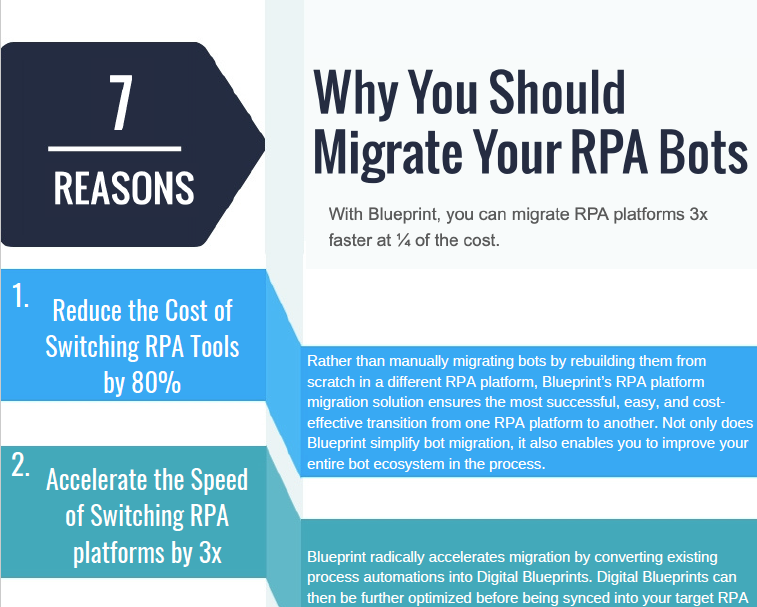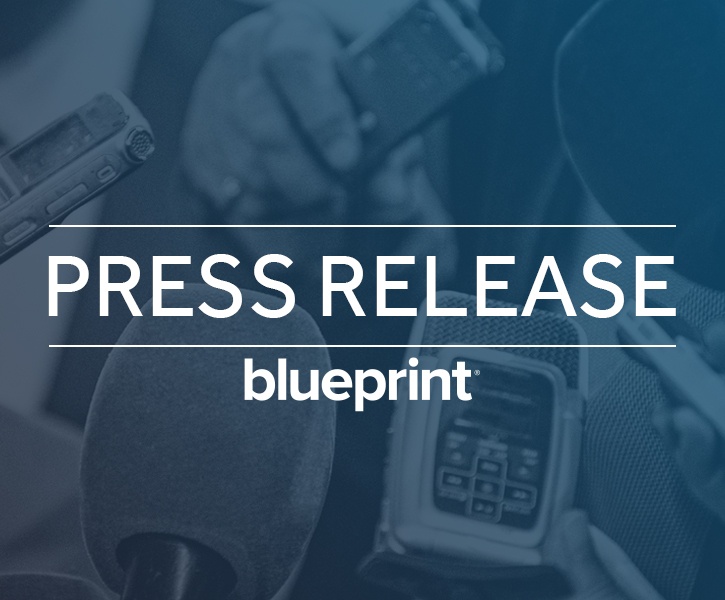The Benefits of Consolidating Your Automations in One Place
A common trend we see in the automation market is RPA programs running on multiple RPA platforms. In other words, they’re using different RPA vendors to develop and deploy automated processes.
This practice leads to a common pain point; automation leaders want to centralize and consolidate their automations in one place because when they’re siloed in multiple platforms, visibility, governance, and change management become that much harder.
The desire to consolidate automations is so strong; it’s one of the prime triggers driving RPA platform migrations.
But before we get into the obvious benefits of consolidating automations in a single repository, let’s explore how RPA programs have ended up using multiple RPA vendors in the first place.
Why Automation Programs are Using Multiple RPA Vendors
RPA programs typically find themselves using multiple RPA platforms due to one, or a combination of three reasons:
-
Different Lines of Business Adopting RPA at Different Times
Multiple RPA vendors could result from different lines of business sponsoring and implementing automation before a centralized, consolidated RPA Center of Excellence (CoE)could be established.
For example, Finance & Accounting initially took the first dip in the pool by adopting UiPath. Then the IT department within the same company looked to leverage RPA but decided to go with Blue Prism instead. -
Leveraging the Different Capabilities of Various RPA Vendors
In some cases, RPA programs looked to different RPA platforms to take advantage of diverse feature sets and capabilities.
After the rise of the dominant first-generation tools, the RPA vendor market has grown considerably and now has roughly 60 providers. New entrants have turned heads with their unique capabilities and benefits.
This appeal isn’t limited to smaller disruptors and nimble upstarts either. Microsoft Power Automate and all the benefits it provides is a prime example of why an RPA program might be willing to implement another RPA vendor. The objective could be to augment its automation efforts or even evaluate a possibly better option, which also feeds into our next point. -
Specialization
As with any relatively new yet growing software market, what tends to happen is a natural evolution towards specialization. The RPA industry is no different.
While first-generation, mainstream RPA players like UiPath, Blue Prism, and now Microsoft Power Automate continue to lead the market, every new entrant introduces increased specialization. And customers are noticing.
Many major software players like SAP and Salesforce are making big investments in their own RPA execution functionalities. The organizations using those major software tools would logically choose to leverage them for RPA with out-of-the-box automation capabilities.
Naturally, this siloed approach with multiple vendors leads to several challenges.
The Challenges of Using Multiple RPA Vendors
Using multiple RPA tools within the same organization creates several challenges. The biggest one is that RPA platforms are proprietary; they all specify process automations in different ways. The way a bot is developed in one platform isn’t the same as how it’s developed in another, creating disparate automation design practices and a lack of quality.
Multiple RPA platforms also means doubling overhead because you’re paying for two vendors, inflating the cost of ownership for RPA.
Most importantly, if your automation program is running on multiple RPA platforms, visibility, control, governance, and change management are siloed, leading to inefficiencies, added effort, and hitting you where it hurts the most: added costs.
The lack of visibility is arguably one of the greatest motivators for our customers to migrate a portion of their portfolio of bots into one RPA platform. If your RPA program uses multiple vendors, it might be time to consolidate your automation efforts into one.
The Benefits of Migrating and Consolidating Your Automations with Blueprint
Blueprint can help you migrate your entire portfolio of bots into one RPA platform 3x faster and with a 75% cost reduction when compared to manual methods.
One of the most impactful benefits of migrating your digital workforce with Blueprint isn’t limited to the accelerated execution and cost reduction of the migration itself. When you migrate bots using Blueprint’s end-to-end migration solution, you’re also able to consolidate all your automated processes in one, central location in your RPA platform for total visibility and control.
By consolidating your automations in Blueprint while leveraging our rich collaboration capabilities that allows all stakeholders to converge and work together in real-time, you’ll be able realize the benefits of RPA centralization, including:
- RPA Standardization – control and oversight over RPA design and development practices to ensure standard operating procedures for higher-quality bots, instead of multiple ways of doing things that leads to errors and rework.
- Optimal Governance – visibility over all automation practices with detailed versioning and the ability to truly collaborate with reviews, approvals, and discussions.
- Proactive Change Management – see the impact of change instantly and correct it before a bot needs to be pulled out of production to maximize business value.
Interested in migrating and consolidating all your RPA platform bots into one place? Download the Blueprint RPA Platform Migration datasheet to see how we do it and everything you have to gain.
Share this
Recent Stories

INFOGRAPHIC: 7 Reasons Why You Should Migrate RPA Platforms with Blueprint

Blueprint to Attend 2023 Microsoft Power Platform Conference and Demonstrate RPA Migration Solution for Automated and Cost-Effective Migrations to Power Automate


